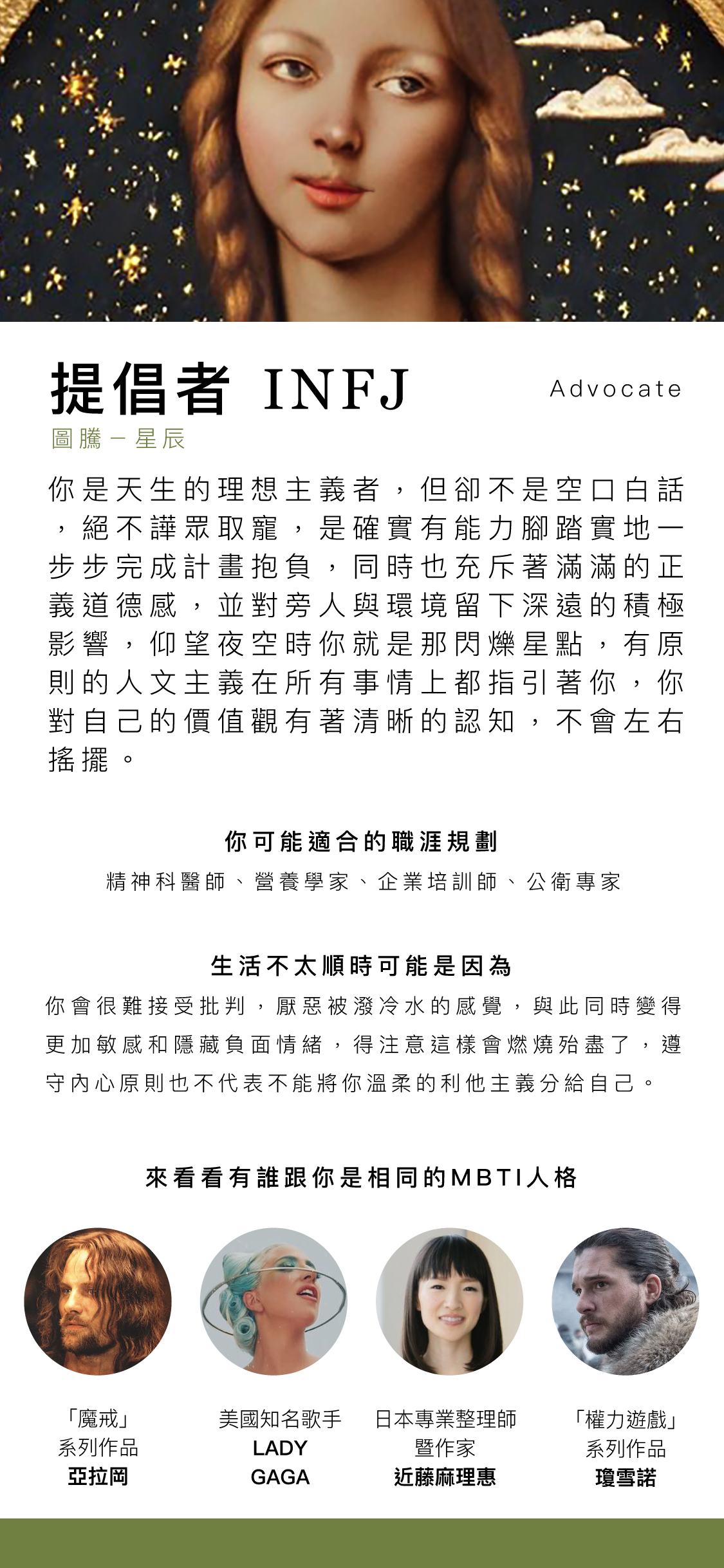logic or feeling, organization or improvisation
adduction or extension, settling or exploring
Through the four dimensions, each dimension has two poles, and a total of eight types of traits are arranged and combined to form 16 types of personality tendencies
In order to avoid the too simple black and white dichotomy, there are many versions of the MBTI test, which will have a large number of questions and then do the permutation and combination to produce the basic 16-type personality
The interesting feature of this test is that it is different from astrology, which has a strong fatalism, but it will be based on individual experience and habits.
So after a period of time, take the test and you will find that your 16-type personality may also change
In order to avoid the too simple black and white dichotomy, there are many versions of the MBTI test, which will have a large number of questions and then do the permutation and combination to produce the basic 16-type personality
The interesting feature of this test is that it is different from astrology, which has a strong fatalism, but it will be based on individual experience and habits.
So after a period of time, take the test and you will find that your 16-type personality may also change
—
➊
Outward (E) Extraversion
Introversion (I) Introversion
It is the way an individual interacts with the outside world, guides and draws energy
E-type people are keen to actively interact with external people and things
and gain vitality and drive from it
Type I people spend more time interacting with their own thoughts
low interest in broad social interactions
➋
Sensation (S) Sensing
Intuition (N) Intuition
is an individual's habitual preferred way of obtaining information
S-type people are often more aware of experiences and details and the facts presented at the moment
N-type people think more abstractly and jump, looking at future possibilities
➌
Thinking (T) Thinking
Emotion (F) Feeling
It is how individuals make judgments and decisions after sorting out their feelings/intuitions
T-shaped people are logical, rational and result-oriented
F-type people will pay more attention to the needs of the emotional side
➍
Judging (J) Judging
Perception (P) Perceiving
Combining the above classifications, we can understand their benchmarks for dealing with people and dealing with the world
Js tend to be structured, robust, and well-organized outcomes
P-type people tend to explore in many ways and are more accepting of flexibility and the unknown
—
















—
related design

Plan B. by THRIVE full range of MBTI sixteen-type personality bracelet
SHOP NOW
Reference source:
